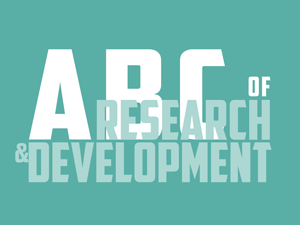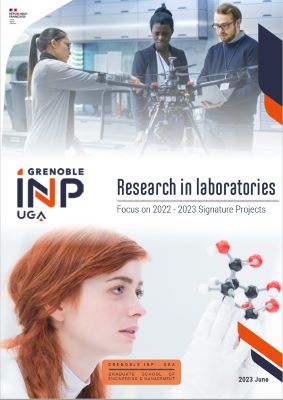Written by Violaine Bigot, Isabelle Chéry, Stéphanie Walcker
I- What is a Joint Laboratory?
A joint laboratory is a large-scale public/private research partnership with a significant human and financial investment. For example, a joint laboratory may involve the purchase of a large piece of equipment, funding from an industrial partner to hire several PhD students, post-docs, etc. Setting up a joint laboratory takes time. It goes far beyond the classic research collaboration on a particular project or on a particular transfer of results.
II- What are the differences with a classic research collaboration contract and/or framework agreement?
1°) A joint laboratory is a bipartite or multipartite collaboration between a laboratory with Grenoble INP as a supervisor, possibly other public laboratories outside Grenoble INP, and one or more private partners (start-up, SME, large group). Unlike the joint laboratory, the collaborative research partnership contract and the framework agreement are always bipartite. More specifically, a framework agreement is intended to provide a framework for joint research between the partner and the public institution as a whole. Thus, it covers future collaborations (thesis supervision, specific research, services, etc.) of all Grenoble INP laboratories with this partner, on various themes. The framework agreement is very often drawn up with a large group. The partnership research collaboration agreement is targeted at specific research in a given laboratory. Research contracts are signed with large groups, SMEs, public institutions, start-ups, among others.
2°) The “joint laboratory” collaboration is intended to be permanent (approximately 4/5 years or more). A classic partnership research collaboration provides a framework for research carried out over periods ranging from 6 months with an end-of-study internship, 1 year with the hiring of a post-doctoral student or 3 years with a thesis supervision. The framework agreement, like the joint laboratory, aims to make the relationship permanent, on average over 4 to 5 years.
3°) In a joint laboratory, the public and private partners must commit financial and human resources to a predetermined research programme. This research programme comprises several sub-projects. In a classic collaboration contract, there is also a shared-cost scientific programme, but focused on a single project. On the other hand, the framework agreement is not intended to define from the outset a research programme or the associated financial and human resources. Indeed, the framework agreement only contains general conditions for collaboration. It is the future agreements specific to the framework agreement that define the research programme and the associated financial and human resources. These specific agreements are set up on a case-by-case basis by the stakeholders according to their needs. The framework agreement thus facilitates the negotiations of these future joint research programmes.
4°) The joint laboratory also defines a specific governance whereas the classic collaboration contract is lighter, simply defining of each party’s scientific leaders. Concerning the framework agreement, a committee composed of representatives of both Grenoble INP and the partner, is created in order to control the successful completion of the framework agreement and to define the collaborations general orientation. Each specific agreement then specifies the scientific managers responsible for monitoring the specific programme.
5°) Like the classic collaboration contract and the framework agreement, the joint laboratory defines a common strategy for the exploitation and transfer of the results of the collaboration. In the contract, this is reflected in the intellectual property and exploitation rules.
III- What are the criteria for steering the collaboration towards the creation of a joint laboratory?
To help you decide whether a joint laboratory is the best framework for collaboration with the identified partner, here are the criteria to consider:
A joint laboratory is usually set up with partners you have already collaborated with. This way, the stakeholders know each other well and share common long-term goals. The joint laboratory should
- Facilitate the development of the collaboration with the partner(s) on well identified research topics.
- Continue a collaboration that is already working to deepen the relationship.
- To continue the research and development of existing joint results between the laboratory and the partner(s).
- To make the private or public partner visible as a driving force for R&D in a given field.
In a joint laboratory, the staff involved are clearly identified and they work in each party's premises. Each party can have access to the others' specific equipment necessary for carrying out the projects defined by the Joint Laboratory's roadmap.
IV- What are the funding possibilities for a joint laboratory?
The joint laboratory can be financed either by the two parties from their own funds, or through the ANR's national “LabCom” call for projects. The conditions are strictly defined. The call is aimed at partners (SMEs and/or an ETI and a public research laboratory) wishing to create a joint laboratory. The amount of the grant can go up to €300 000.
We will detail the conditions applicable to the ANR's LabCom call for projects in a future online publication. This call is open on a rolling basis but the closing date is set for the next call on 12/10/2018.
If you wish to know more about this specific call for proposals, please visit: http://www.agence-nationale-recherche.fr/LABCOM-2018.
To help you respond to the call for LabCom projects, DRIVE is at your service:
- Françoise DALLUT
francoise.dallut@grenoble-inp.fr
or
Violaine BIGOT
violaine.bigot@grenoble-inp.fr
Synthesis
To choose the most appropriate collaboration framework and to help you set up and negotiate your partnerships, contact DRIVE:
drive.contrats@grenoble-inp.fr




